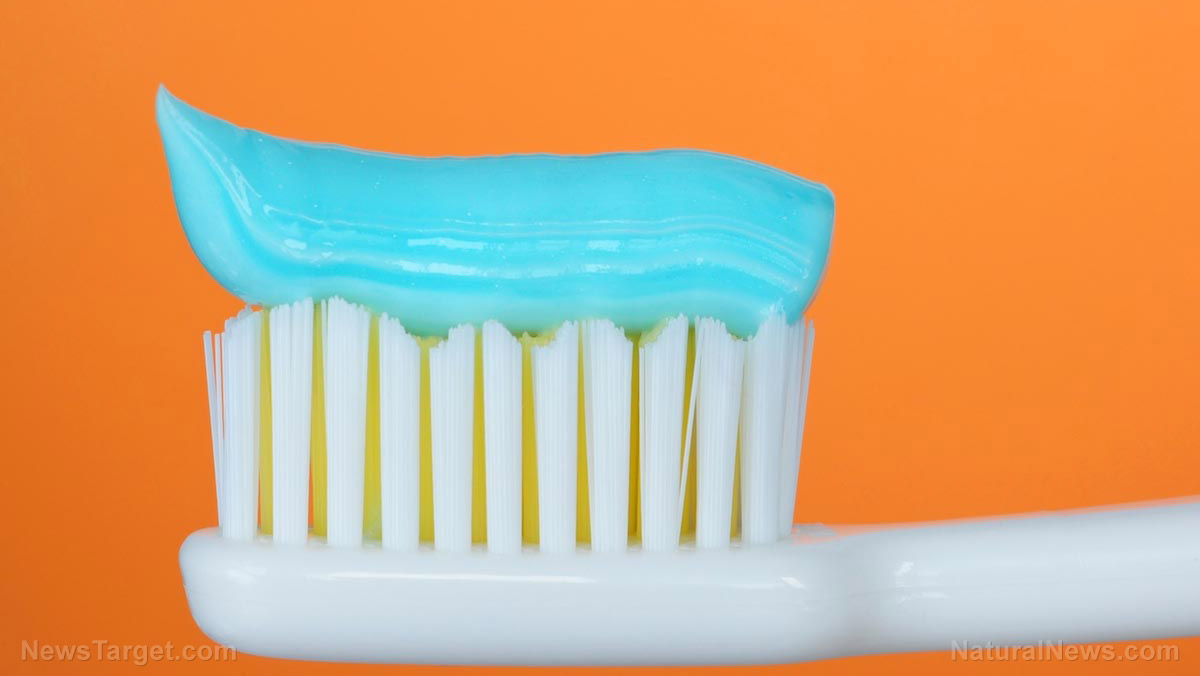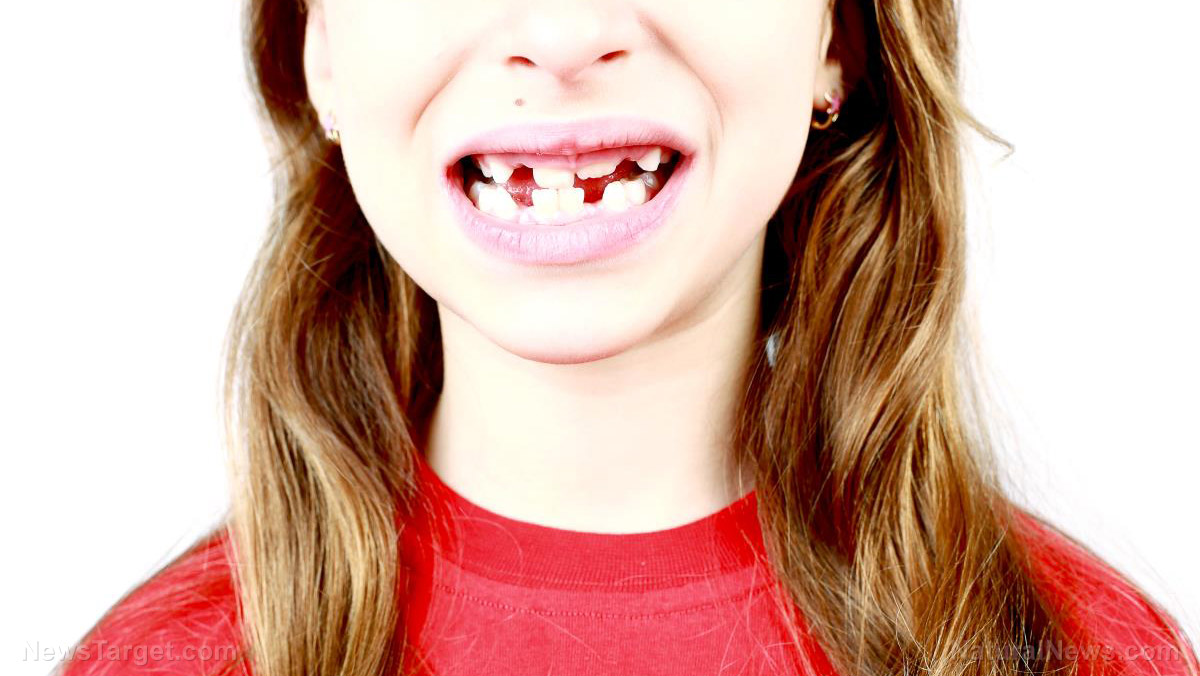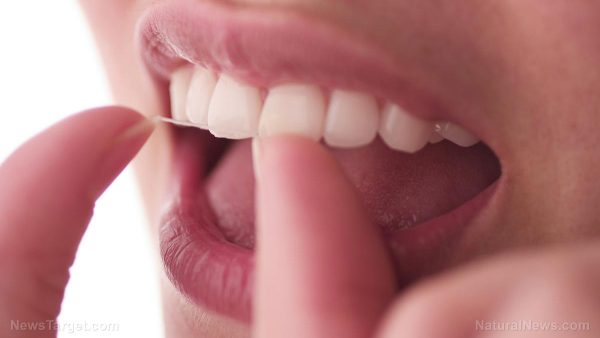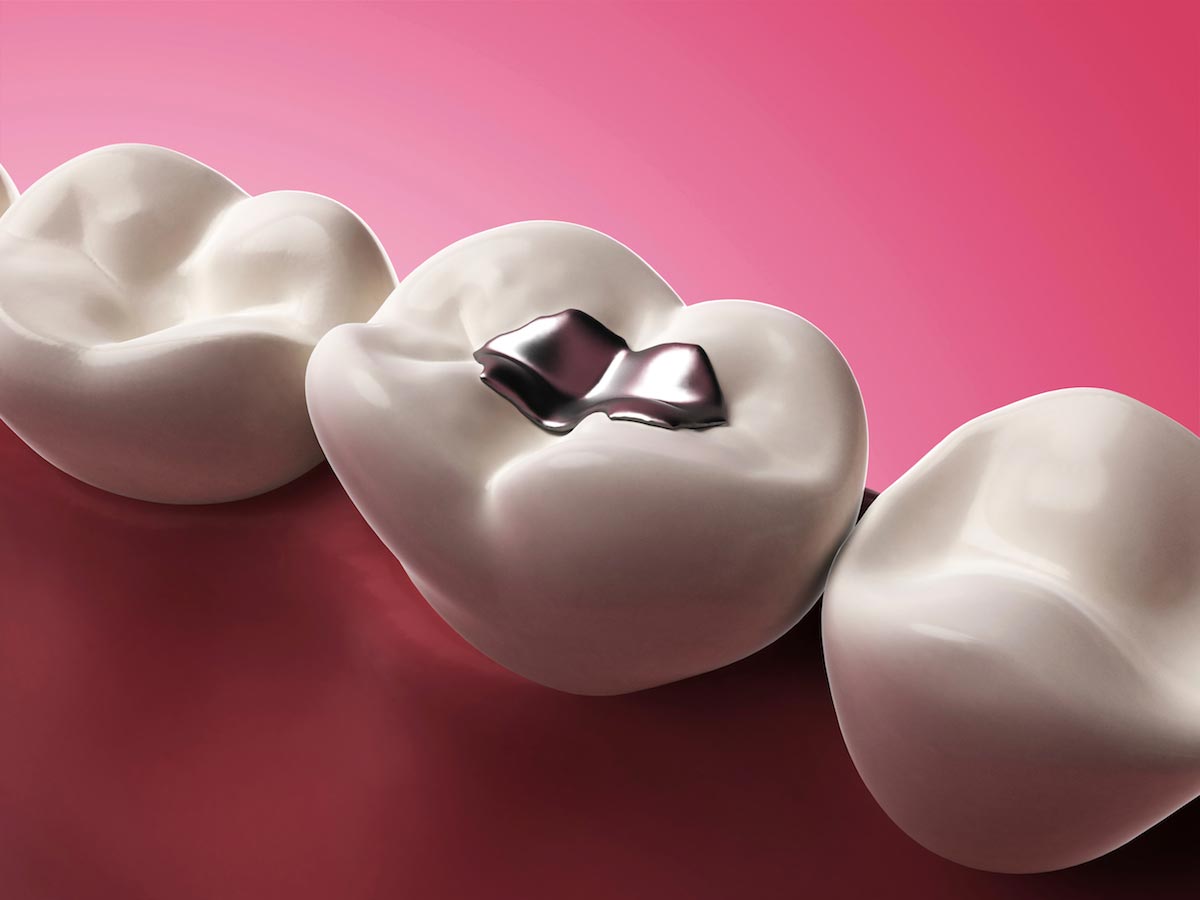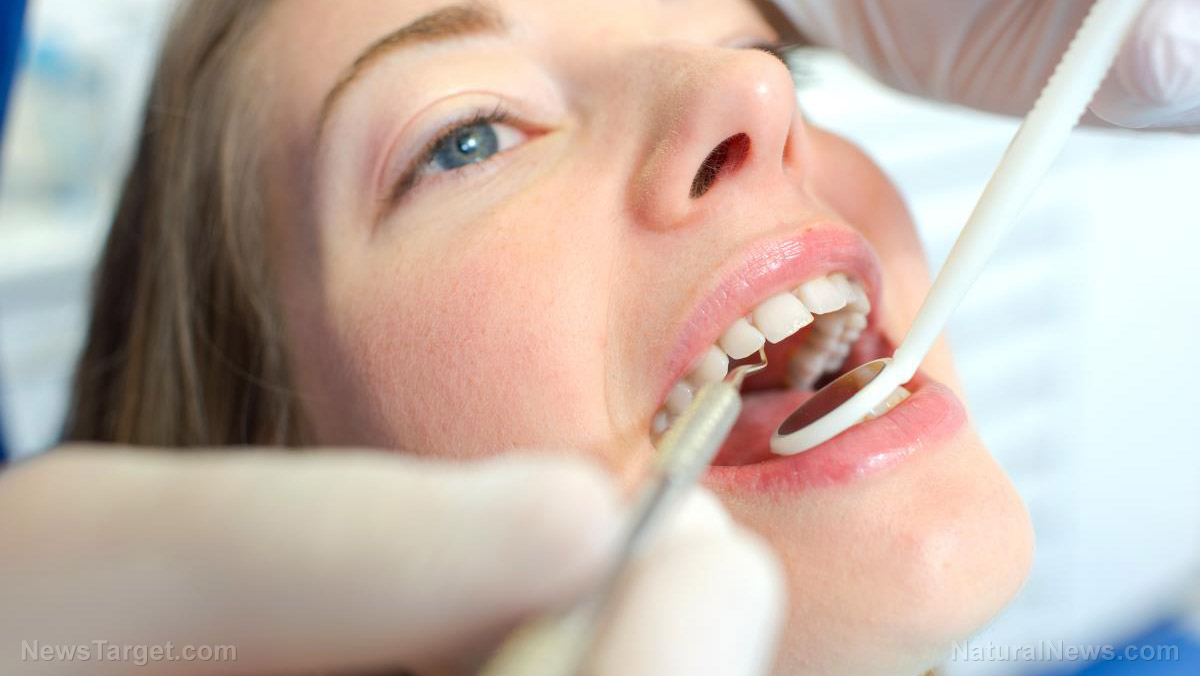Holistic and Biological Dentistry
11/01/2016 / By holisticdentistry

Biological dentistry stresses the use of nontoxic restoration materials for dental work, and focuses on the unrecognized impact that dental toxin and hidden dental infections can have on overall health.
Article by Dr. Serge Agafontsev
There is a growing recognition among alternative dentists and physicians that dental health has a tremendous impact on the overall health of the body. European researchers estimate that perhaps as much as half of all chronic degenerative illness can be linked either directly or indirectly to dental problems and the traditional techniques of modern dentistry used to treat them. The well-publicized dangers associated with the use of silver/mercury fillings (amalgams) are only the tip of the iceberg as far as the negative impact that dentistry can have on a person’s health. “Dental problems such as cavities, infections, toxic or allergy-producing filling materials, root canals, and misalignment of the teeth or jaw can have far reaching effects throughout the body.”
Hal Huggins, D.D.S.
“One of the big problems in the United States,” says Gary Verigan, D.D.S., of Escalon, California, “is that dentists are trained to practice with only the most meager of diagnostic equipment. These instruments , consisting primarily of x-rays, are incapable of detecting enough about the tooth and its surrounding environment, giving the dentist only a superficial understanding of the problem and the impact it may be having on the patient’s overall health. People often go through many doctors and therapies in search of answers for their problems, never realizing that their chronic conditions may be traceable to dental complications.”
“In contrast, biological dentistry treats the teeth, jaw, and related structures with specific regard to how treatment will affect the entire body. According to Hal Huggins, D.D.S., of Colorado Springs, Colorado, a pioneer in this field, “Dental problems such as cavities, infections toxic or allergy-producing filling materials, root canals, and misalignment of the teeth or jaw can have far-reaching effects throughout the body.”
How Dental Problems Contribute to Illness
“Dental infections and dental disturbances can cause pain and dysfunction throughout the body,” states Edward Arana, D.D.S., President of the American Academy of Biological Dentistry, “including limited motion and loose tendons, ligaments, and muscles. Structural and physiological dysfunction can also occur, impairing organs and glands.”
Dr. Arana cites several major types of dental problems that can cause illness and dysfunction in the body:
- Infections under and around teeth
- Problems with specific teeth related to the acupuncture meridians and the autonomic nervous system
- Root canals
- Toxicity from dental restoration materials
- Bio-incompatability to dental restoration materials
- Electrogalvanism and ion migration
Some of the more common causes of these dental problems are unerupted teeth ( teeth that have not broken through the gum), wisdom teeth (both impacted or unimpacted), amalgam filled cavities and root canals, cysts, bone cavities, and areas of bone condensation due to inflammation in the bone. These conditions can be diagnosed using testing methods such as blood tests, applied kinesiology, electroaupuncture biofeedback, and in some cases, x-rays. A thorough review of the patient’s medical and dental histories is also essential.
Infections Under the teeth
Pockets of infection can exist under the teeth and be undetectable on x-rays. This is particularly true for teeth that have had incomplete root canals, or are dead. These infections may persist for years without the patient’s knowledge.
When infections are present, toxins can leak out and depress the function of the immune system, leading to chronic degenerative diseases throughout the body. Once the infection is cleared up, many of the symptoms of disease will disappear.
Infections near the root can also travel into the bone and destroy it,
Relationship between Specific Teeth and Illness
In the 1950s, Reinold Voll, M.D., of Germany, discovered that each tooth in the mouth relates to a specific acupuncture meridian. Using his electoacupuncture biofeedback technique, he found that if a tooth became infected or diseased, the organ on the same meridian could also become unhealthy. He found that the opposite held true as well, that dysfunction in a specific organ could lead to a problem in the corresponding tooth.
For example people who hit their front teeth too hard often have kidney disturbances, as there is a specific relationship between the kidneys and the front teeth.
Toxicity from Dental Restoration Materials
Dental amalgam fillings can release mercury, tin, copper, silver, and sometimes zinc into the body,” says Dr. Arana. All of these metals have various degrees of toxicity and when placed as fillings in the teeth can corrode or disassociate into metallic ions (charged atoms). These metallic ions can then migrate from the tooth into the root of the tooth, the mouth, the bone, the connective tissues of the jaw, and finally on into the nerves. From ther they can travel into the central nervous system, where the ions will reside, permanently disrupting the body’s normal functioning if nothing is done to remove them.
Other types of metal-based dental restoration can similarly release toxic metals into the body. According to David E. Eggleston, D.D.S., of the Department of Restorative Dentistry at the University of Southern California in Los Angeles, a patient undergoing dental work developed kidney disease due to nickel toxicity from the dental crowns that were being placed in the patient’s mouth. As each successive crown was placed, the disease intensified, verified by blood and urine tests, and physical examination. Once the nickel crowns were removed, the patient gradually became symptom free.
Thereon Randolph, M.D., of Batavia, Illinois, founder of the field of environmental medicine, believes that both the medical and dental professions have become too lax in dealing with the scope and potential danger of toxic metals. “Although it is not clear whether dental amalgams and other metals used in dental work are the primary or secondary cause of many health problems,” he says, ” both doctors and dentists have to be concerned with evaluating the clinical implications of using toxic metals in the human body.” Dr. Randolph believes part of the problem stems from American dental schools ignoring the mounting evidence on toxicity from dental restorations, especially amalgams, despite clear documentation shown in European studies.
In September 1992, California governor Pete Wilson requested that the State Board of Dental Examiners develop a fact sheet on dental materials to be distributed to dentists. California is the first state to pass such legislation, notes Joyal Taylor, D.D.S. , of Rancho Santa Fe, California, President of the Environmental Dental Association. He hopes this will pave the way for a total ban on the use of mercury in dental restorations, adding that two to three thousand dentists across the country are now calling for such a ban on mercury dental amalgams.
Mercury Dental Amalgams
Mercury Dental Amalgams: While all metals used for dental restoration can be toxic, the most harmful are the mercury dental amalgams (silver/mercury) used for fillings. According to Dr. Taylor, “These so-called ‘silver fillings’ actually contain 50 percent mercury and only 25 percent silver.”
Mercury has been recognized as a poison since the 1500’s, and yet mercury amalgams have been used in dentistry since the 1820’s. They are still being used today even though the Environmental Protection Agency (EPA) declared scrap dental amalgam a hazardous waste in 1988. Even the American Dental Association, which has so far refused to ban amalgams, now instructs dentists to “know the potential hazards and symptoms of mercury exposure such as the development of sensitivity and neuropathy,” to use a no-touch technique for handling the amalgam, and to store it under liquid, preferably glycerin or radiographic fixer solutuion, in unbreakable, tightly sealed containers.
For some dentists, such as Richard D. Fischer, D.D.S., of Annandale, Virginia, these measures are not enough. Since becoming aware of the health risk amalgams pose, he has refused to work with them and has had his own silver fillings removed. “I don’t feel comfortable using a substance designated by the EPA to be a waste disposal hazard,” he says. “I they say it’s okay to put it in people’s mouths. That doesn’t make sense.”
According to the German Ministry of Health, “Amalgam is considered a health risk from a medical viewpoint due to the release of mercury vapor.” Everyday activities such as chewing and brushing the teeth have been shown to release mercury vapors from amalgams. Amalgams can also erode and corrode with time (ideally they should be replaced after seven to ten years), adding to their toxic output.
Studies by the World Health Organization show that a single amalgam can release three to seventeen micrograms of mercury per day, making dental amalgam a major source of mercury exposure. A Danish study of a random sample of one hundred men and one hundred women showed that increased blood mercury levels were related to the presence of more than four amalgam fillings in the teeth. American, Swedish, and German scientists examining cadavers have also found a clear relationship between the number of fillings and the mercury count in the brain and kidneys.
In Germany the sale and manufacture of amalgams has been prohibited since March 1992, and Sweden, after a special commission determined that amalgam was a toxic material, that country’s Social Welfare and Health Administration issued an advisory against its use in the dental treatments of pregnant women. Furthermore, Sweden has promised to ban amalgams entirely as soon as a suitable replacement is found. Until then the government pays 50 percent of the cost for removal of amalgams. In the United States, however, little is being done to deal with the effects of mercury amalgams because most dentists still maintain that they are safe. They continue to place mercury in their patients’ mouths even though the metal is more toxic than arsenic.
The problem is so widespread that Dr. Taylor now devotes his entire practice to the removal of amalgams. “There have been no studies [in the United states] on the safety of mercury in dental work, but when it leaks from the teeth it can cause both physical and mental problems,” he states. Dr. Arana adds that “numbness and tingling, paralysis, tremors, and pain are just some of the symptoms of chronic metal intoxication associatied with the use of mercury dental amalgams.”
Though the ideal replacement for mercury amalgams has not yet been found, there are some less toxic alternatives that biological dentists are working with. The best one so far is the so-called “composite amalgam,” which is a combination of metals that are less toxic than mercury and slower to break down.
Dr. Huggins recommends that people who choose to have their amalgams removed ask their dentists to use a rubber dam, a thin sheet of rubber that slips over the teeth. “Dams prevent over 95 percent of the mixture of mercury and water produced by the drilling out of old fillings from going down your throat,” he says. “they also reduce the amount of mercury that you might absorb from your cheeks and under your tongue.” Dr. Huggings also suggests that people consider early morning appointments for amalgam removal, rather than later in the day, because the mercury vapor from other patients’ sessions can linger in the air for hours and be absorbed by breathing. Some dentists use mercury vapor filter systems, he points out, but those who do are rare.
Charles Gableman, M.D., of Encinitas, California, a leader in the field of environmental medicine, always advises the removal of his patients’ amalgam fillings. According to Dr. Gableman, patients with chronic fatigue syndrome, or with a lack of resistance to infections, allergies, and thyroid dysfunction, all improve after their fillings are properly removed. He believes it is possible that these patients have properly removed. He believes it is possible that these patients have suffered from basic allergies their entire lives, and that the mercury toxicity from the fillings simply adds to the body’s toxic load and “pushes them over the edge,” resulting in chronic medical problems.
Extensive clinical evidence based on patient case histories attests to the effects of mercury amalgam toxicity. Dr. Tylor cites an example of a woman who came to him suffering from rheumatoid arthritis. After having her amalgam fillings removed, she not only had relief from her arthritis, but her allergies abated to a large extent.
Another patient of Dr. Taylor was suffering from numerous symptoms of environmental illness. She exhibited multiple sclerosis-type symptoms, could only tolerate four or five foods, and developed sensitivities to chemicals, noise, light, and electromagnetic radiation. She also had jaundice and had been diagnosed with candida overgrowth.
After having her amalgam fillings removed, she found that she was able to eat many different foods again, enabling her to put back on the sixty pounds she diminished and her candida and jaundice cleared up.
A woman in Palm Beach, Florida, for years endured fatigue, mononucleosis (for which she was hospitalized at age sixteen), bladder infections, and, eventually, Epstein-Barr virus, candida, food allergies, and muscle spasms.
Finally, her own investigation led her to consider the possibility of mercury poisoning and consult with Dr. Huggins. He found a tooth with a root canal that had been filled with dental amalgam. Once the amalgam was removed, her symptoms abated.
Bio-incompatibility to Dental Restoration Materials
In the same way that some people have adverse reactions to prescription drugs, some people also react negatively to specific dental materials. A person can already have been sensitized to dental restoration material through previous exposure from the environment and foods.
Selected Health Symptom Analysis of 1,569 Patients Who Eliminated Mercury-Containing Dental Fillings
The following represents a summary of 1,569 patients in six different studies evaluating the health effects of replacing mercury-containing dental fillings with non-mercury fillings. The data was derived from the following sources: 726 Patient Adverse Reaction Reports submitted to the FDA by patients; and 807 patients reports from Sweden, Denmark, Canada, and the United States.
This bio-incompatibility, or incompatibility of the body, to the dental material can lead to severe allergic reactions including food allergies, and can contribute to chronic fatigue syndrome, chronic sinusitis and headaches, and can cause intractable pain syndrome. However, dentists often don’t test for sensitivity to dental restoration materials before placing them in their patients’ mouths.
The most common reactions are found to be produced by the mercury amalgams used for fillings, and by the various metal components that make them up, including mercury, copper, tin, zinc, and silver. According to Dr. Arana, some of the symptoms caused specifically by amalgam fillings are:
- Chronic fatigue syndrome and lack of energy
- Tendency to chronic inflammatory changes (including rheumatoid arthritis, phlebitis, and fibromyalgia)
- Chronic neurological illnesses, especially when numbness is one of the leading symptoms
- Lowering of the pain threshold
- Disturbances of the immune system
Patients can be screened for sensitivity by a simple blood test, known as the Clifford Materials Reactivity Testing, after its developer, Walter Jess Clifford, M.S., R.M. of Colorado Springs, Colorado. In this test, the patient’s serum is exposed to the various components and by-products of dental materials to see if they provoke an immune reaction (antibody production). This makes it possible to determine which materials the body will be sensitive to. This information is then matched through a computer database to various dental products, enabling the dentist or physician to select which products are safe for each patient. “By using this form of testing,” Clifford says, “it is possible to check the patient for an enormous number of dental products suitabilities without having to examine the finished dental product. One only needs to know what the dental restorative material contains and what it will give off when it breaks down.” Bioincompatible and toxic materials already in the mouth can then be replaced with those materials that have proven to be nonreactive. Applied kinesiology can also be used to test all materials and anesthetics before using them on patients.
After any dental material is removed, Dr. Huggings always recommends a thorough detoxification. According to Dr. Huggins, simply removing the fillings is not enough to rid the body of the toxic materials that may have built up over time, and may continue to cause allergic reactions. He places his patients on a detoxification regimen which can include nutritional support, acupressure, and massage treatments. Chelating agents, such as EDTA (ethylenediaminetetraacetic acid) and vitamin C, can be used intravenously or in tablet form as well. He cautions that any detoxification therapy should only be administered under the supervision of a qualified health professional.
Electrogalvanism
Due to its mineral content, the saliva in the mouth is electrically conductive. As a result, when saliva in a person’s mouth interacts with a dental restoration containing metal, a battery is created, causing an effect known as electrogalvanism. “Electrogalvanism is literally the electricity generated by a person’s fillings,” says Dr. Arana. “The saliva acts as a conductant and the dissimilar metal fillings then try to neutralize each other to balance out the electrical charge. This has the effect of causing toxic material from the fillings to erode, like the terminals of a battery, and leak out into the body.” Dr. Arana points out that even two similar-looking amalgam fillings, if they were not placed on the same day, are likely to be of different compositions and therefore generate an electrical current between them. Even gold fillings or crowns are usually put over old fillings of a different metal, so electrogalvanism can even occur within a single tooth.
Since the teeth, the mouth, and the bone root all contain fluid, there are a variety of combinations that can determine where this electrical current flows. “It can go from a tooth to a muscle, tooth to a joint, tooth to an organ, and even a tooth to part of the brain, to the point where it can change the permeability of the blood-brain barrier,” Dr. Arana states.
“Electrogalvanism is frequently the cause of lack of concentration and memory , insomnia, psychological problems, tinnitus, vertigo, epilepsy, hearing loss, and eye problems, to name but a few,” says Dr. Arana. “Since high dental currents lead to erosion of the restoration materials, this problem rarely exists without coexisting problems of heavy metal toxicity, which can act synergistically with multiple chemical sensitivities to cause environmental illness.”
Electrogalvanism can be identified by an instrument known as an electrogalvanometer, which measures the electrical current and voltage generated by the dental amalgam in a tooth. Applied kinesiology can also be used to test for electrogalvanism between the upper and lower teeth. If the indicator muscle becomes weak when the patient gently touches the upper teeth to the lower teeth, then metal fillings from the top are forming a circuit with metal fillings on the organism, the muscle becomes weak as soon as one metal touches another. Likewise, when the teeth are apart, and the circuit is broken, the indicator muscle will become strong again.
Read more at: doctorserge.com
Tagged Under: Biological Dentistry, Holistic Dentistry

